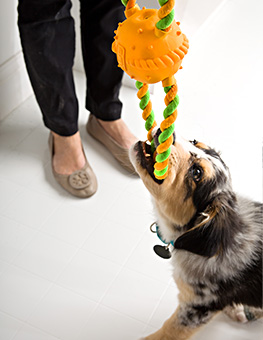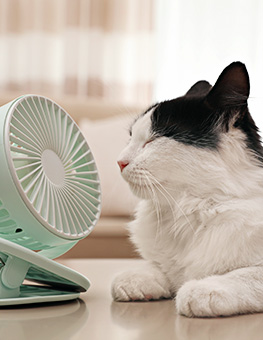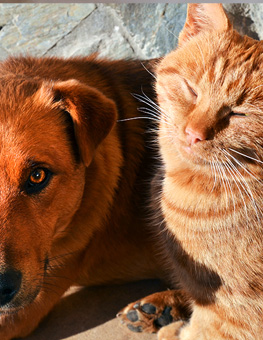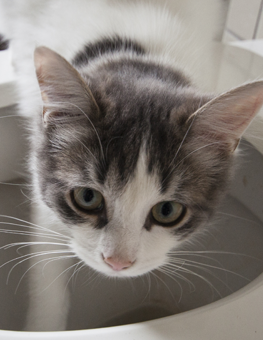The Heat is On: Preventing Heat Stroke in Cats and Dogs
It's summertime, everyone loves to be outside - and that includes your family pet.

Some signs of heat stroke include sluggishness & thick, sticky saliva.
Whether they're hanging out in the backyard, heading to the beach, or going for a hike, pets always seem like they are having a blast when they are outside. Unfortunately, you have to be mindful of heat stroke in pets. This serious condition can be life-threatening if severe enough, so read on for our tips on how to prevent, spot, and treat heat stroke in cats and dogs.
Heat stroke is the common term for hyperthermia (aka elevated body temperature). Your pet’s normal body temperature is between 99.5 and 102.5 degrees Fahrenheit. When your pet’s temperature rises to 103 degrees Fahrenheit, they are overheated and at risk of heat stroke. Once it reaches 109, it’s life-threatening.
Recognizing Heat Stroke in Pets
- Look for signs of lethargy, weakness, collapse, or coma.
- Your pet will begin to pant excessively, close his eyes, and look like he is going to pass out or, in severe cases, he may actually pass out.
- Other signs of heat stroke include sluggishness, unresponsiveness, a bright red tongue, thick, sticky saliva, diarrhea, and vomiting (sometimes with blood).
Preventing Heat Stroke in Your Cat or Dog
- The most common cause of heat stroke is leaving your pet in a car without fresh air and water. Never leave any animal in a hot car, not even for a short period. The temperature inside a car can rise quickly even with the windows cracked.
-

Overheated dogs and cats lose electrolytes. On super hot days, add Pedialyte or Gatorade to their water.
Other causes of heat stroke are excessive or vigorous exercise in hot weather, too much excitement, or being outside for long periods of time without shade and water.
- Make sure your pet always has enough cold water nearby and never leave him unattended outside.
- Try to limit sun exposure between 11am to 3pm – the hottest hours of the day and keep a fan nearby so your pet has a constant stream of air or a tub of cool water
- When dogs and cats get overheated they lose electrolytes. On super hot days, add Pedialyte or Gatorade to his water – just a tablespoon or two.
Pets Vulnerable to Heat Stroke
- Dogs and cats that have an infection, heart disease, seizures, or muscle spasms are also more prone to heat stroke, as well as puppies and kitties up to 6 months, older cats and dogs (7 years in large breeds and 14 in smaller ones), overweight pets, and ones with dark and thick coats.
- Flat-faced dogs like Pugs, Boxers, and Bulldogs and cats like Persians and Himalayans are especially susceptible due to their shorter airways. Dogs and cats stay cool "and sweat" by panting, so their restricted airways can cause heat stroke faster than in pets with longer noses.
Treating Your Pet for Heat Stroke
- If you think your pet has heat stroke, take him to the vet immediately – it’s an emergency.
- On the way to the vet, try feeding him cold water (you may need to squirt it in his mouth)
-

To treat heat stroke in your pet, use a cold washcloth on their head, stomach, underarms, and feet.
Place cold washcloths on his head, stomach, underarms, and feet. A bag of ice can also be placed around his mouth and anus, too.
- Treatment should be monitored and stopped once his rectal temperature decreases to 102.5 degrees. Healthy pets can recover from heat stroke if their body temperature does not reach excessive temperatures, but are at risk if not caught and treated early.
So, remember to keep an eye on your pet, restrict direct sun exposure, and make sure that there is plenty of water. Keep this basic rule of thumb in mind: If you’re hot, your pet is even hotter. Be sure to protect them so you both can enjoy a happy, safe summer.














